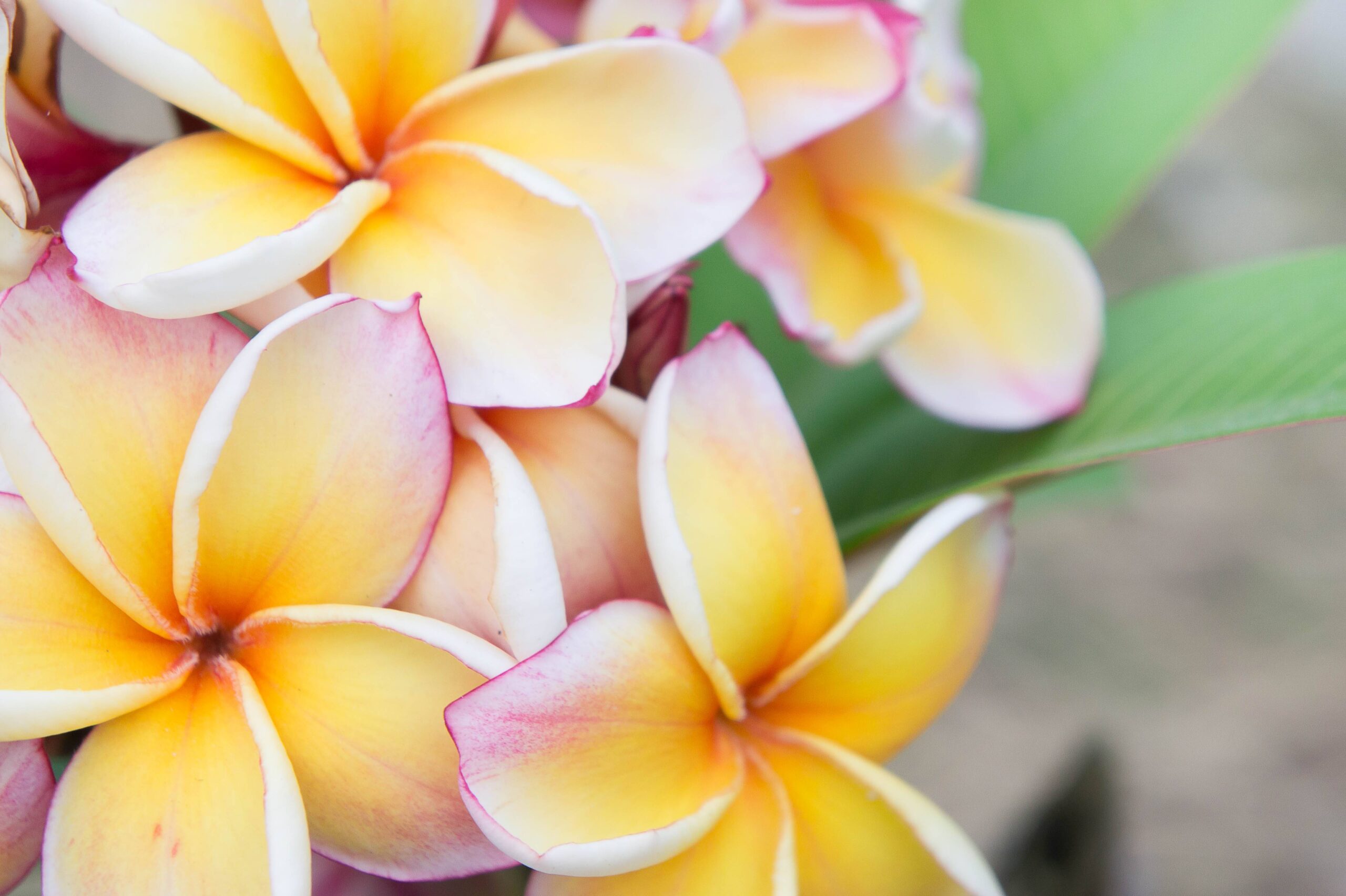The aromas you smell, once you walk down the streets in Bali, are incense and its most beautiful flower – frangipani. This exquisite floral fragrance fills the air, the spa rooms, the offerings, and every part of Balinese life.
Enchanting frangipani trees with dense curved branches are sprinkled with delicate star-shaped blossoms of different colours from innocent white to intense burgundy.
Let’s learn more about the fascinating culture and history of using frangipani in Bali, as well as what is this flower exactly.
What is Frangipani Flower?
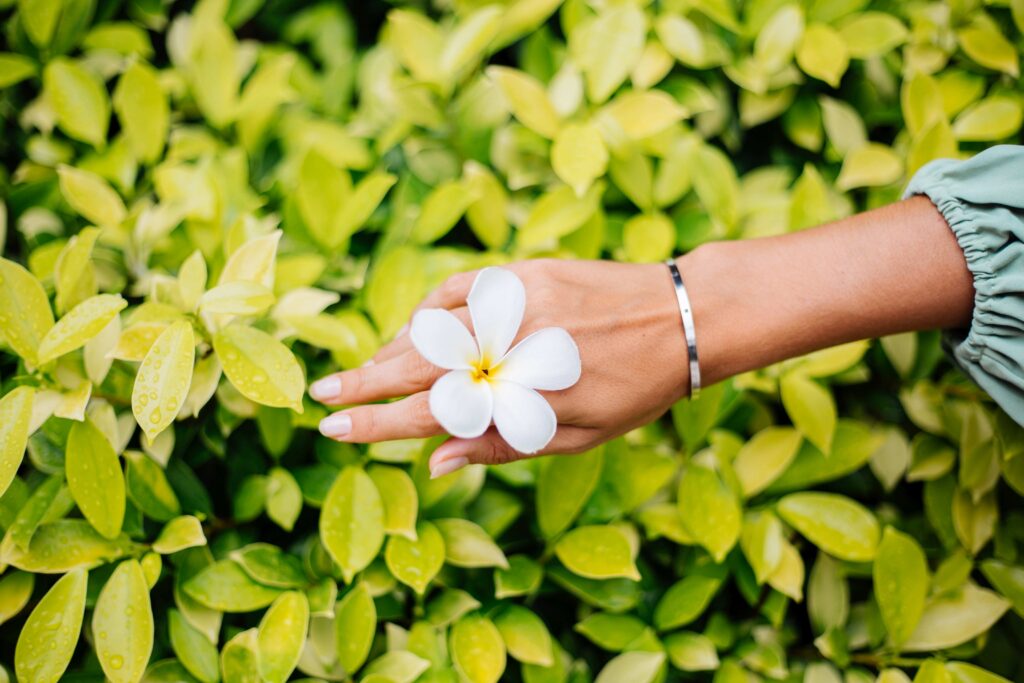
Frangipani – Bunga Jepun in Balinese or bunga kamboja in Indonesian – is a tropical flower, known to the rest of the world as Plumeria.
Frangipani is not native to Indonesia, it is originally from Central America and some of the first traders from the West brought it with them.
It is now the most popular flower in Bali, often used in religious ceremonies, offerings and simple landscaping.
As a plant, it grows really well and fast in tropical hot weather and doesn’t require much water or maintenance.
Depending on the conditions and where it is planted (soil or pot) it can either become a tall bush or a majestic tree up to 8 meters high and 4 meters wide.
Types Of Frangipani Tree And Flowers
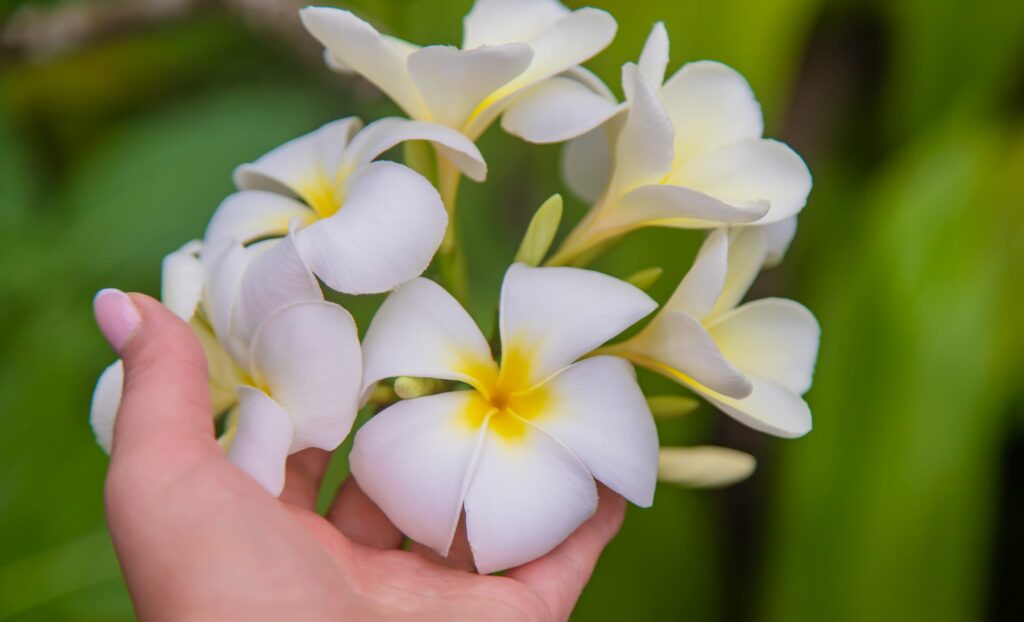
Each Frangipani flower has 5 big petals, swirled around, without visible stamens.
There are quite literally hundreds of varieties and hybrids in terms of colours and the shape of petals. But these are the colours of the frangipani you will see in Bali most often:
White and yellow – the most common type and also the one with the strongest smell.
Mostly yellow, with a little bit of white on the edges
Petals with hues of white, pink, and yellow
Mostly pink with a little bit of yellow
With bright yellow, almost orange in the centre, and rich dark magenta, almost red, petals.
Double whirl or double frangipani is the rarest type of Frangipani Bali that has two layers of petals. Usually, double whirls are white and yellow.
It is common for different types of frangipanis planted in one garden to somehow pollinate each other and produce even more stunning colour combinations.
How Balinese Use Frangipani In Daily Life

For Healing: The frangipani tree’s sap is used in traditional Balinese medicine for its healing properties.
In perfumes and incense: blossoms are used to make natural oils, incense, and soaps. Frangipani extracts are believed to bring enlightenment, relieve stress, and have a light sedative effect. Frangipani perfume has a very sweet and floral aroma.
As Accessories: women often wear a frangipani tucked behind the ear or into the hair. All dance performers. Frangipani complements natural beauty.
In Art: Frangipani inspires many paintings and hand-made products, from clothes to massive adornments for festivals and weddings.
In Rituals And Offerings. From daily offerings to large-scale ceremonies.
What Do Frangipani Tree And Flower Symbolize in Bali?
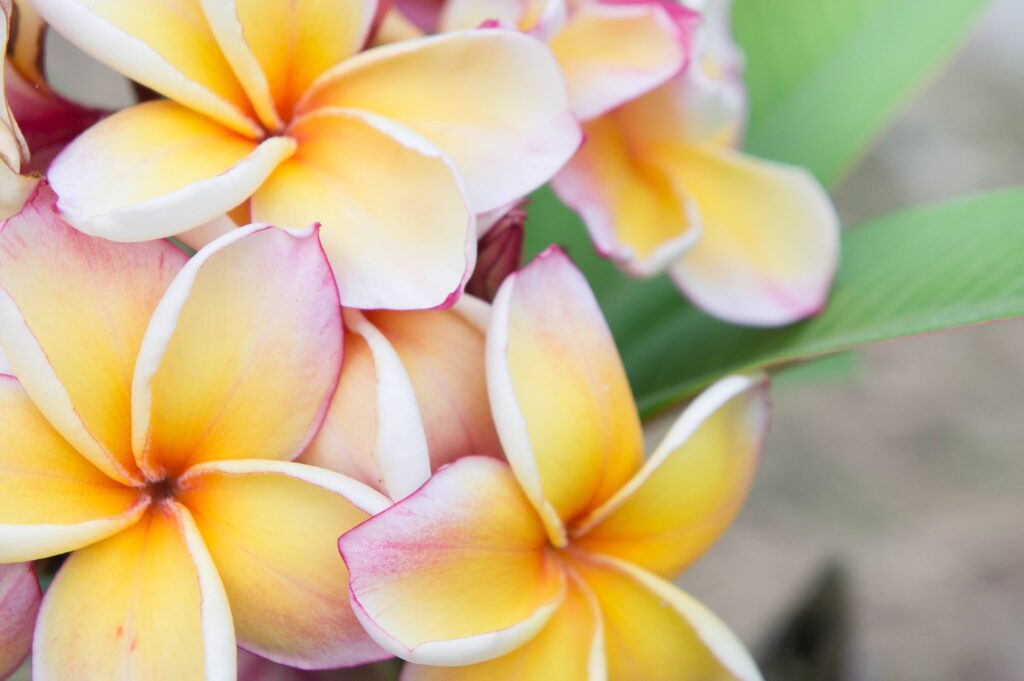
The Frangipani flower has 5 petals which symbolize 5 elements of the universe: earth, fire, water, air, and ether.
How the petals whirled together is a reminder of an omnipresent connection between all living creatures and the universe.
The tree itself is a bridge between man’s world and God’s realm.
The sacred status of frangipani gives it purifying power and Balinese plant the trees and use the blossoms in houses and temples.
In Hinduism, frangipani blossoms are particularly sacred for worshipping and prayers. They symbolize Lord Shiva and during prayers are held by the tip of the fingers or placed on the edge of the plan.
Once the prayers are done, the Balinese tuck the flower in the hair or behind the ear.
Frangipani – Symbol Of Kindness And Purity
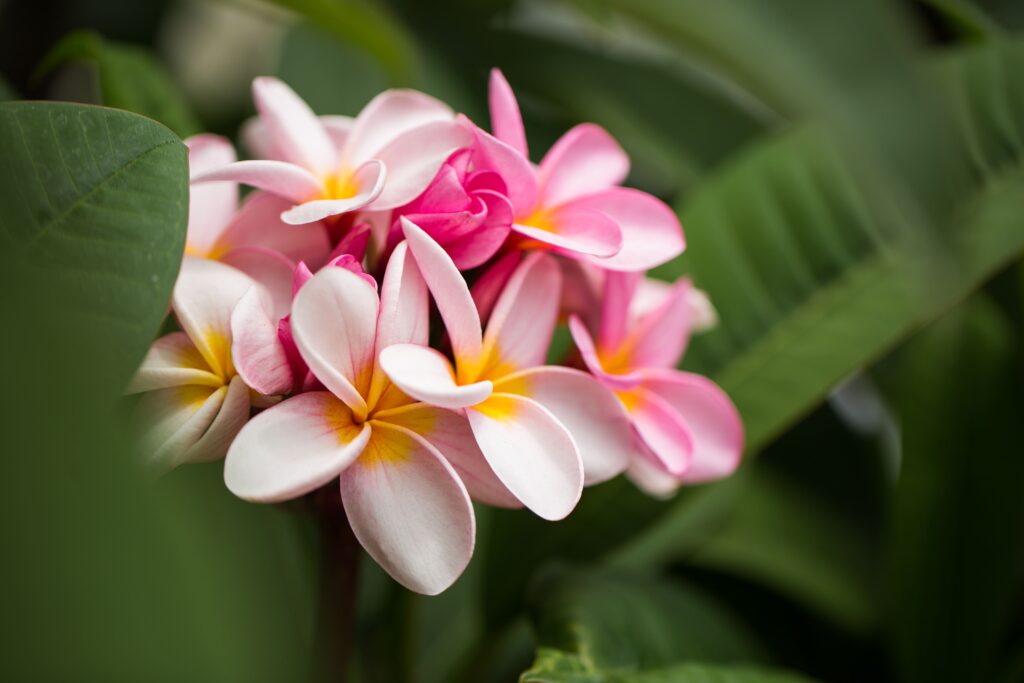
In Bali, the frangipani tree bloom marks a “good month” as it is believed that the flowers only appear during Sasih Kapt – every fourth full moon.
As a symbol of a pure untained heart, white frangipani flowers are allowed to be used in prayers to Sang Hyang Widi Wasa (supreme god for Hindu-Balinese), the ancestors, and Rishis (a term for spiritual teachers).
Yellow tinge on white petals can be also associated with Lord Shiva – protector, creator and destroyer of the universe because he can use a weapon called Nagapasa that has yellow rays.
Frangipani In Daily Offerings Canang Sari
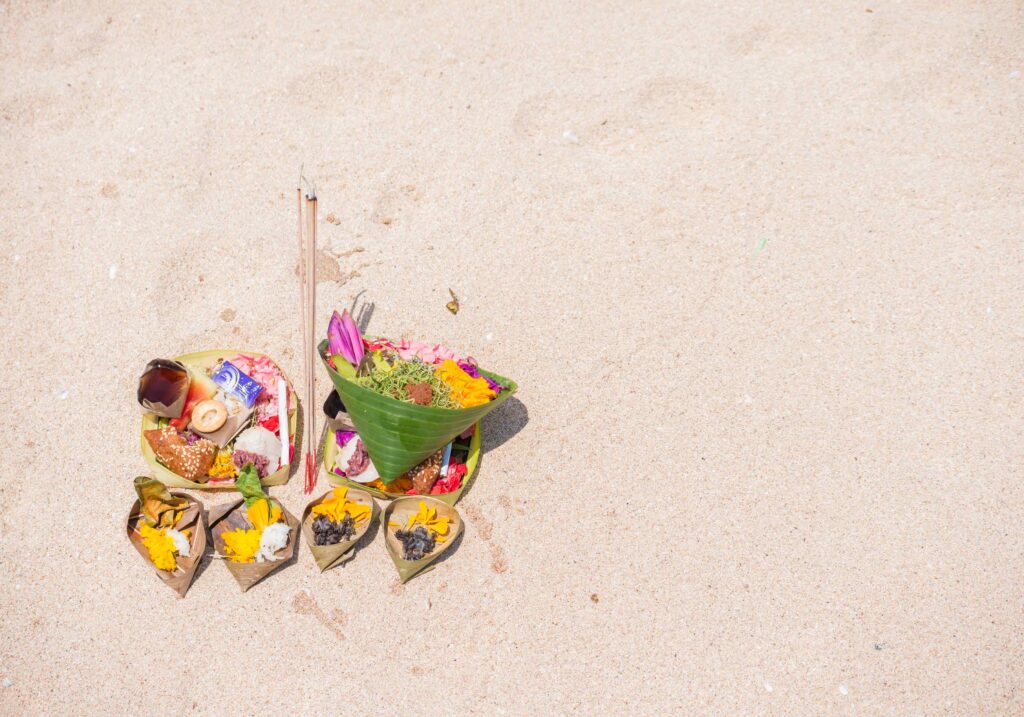
Every day in Balinese culture starts with offerings of gratitude to gods and ancestors in the form of small woven baskets filled with natural gifts – canang sari.
Frangipani trees bear flowers that are a must-have in daily offerings.
Firstly, because of its symbolic association with the purity of one’s heart, but also because of the aroma. The scent is believed to create a sacred aura.
In Hindu scriptures, Bhagavad Gita, it is said:
Whosoever offers to me (God., ed.) with devotion a leaf, a flower, a fruit, or water, that offering of love, of pure heart I accept (ix:26)
Following the teaching, every Hindu household has been placing a flower and offerings of gratitude to their Gods for generations.
Frangipani – Symbol Of Friendship And Hospitality
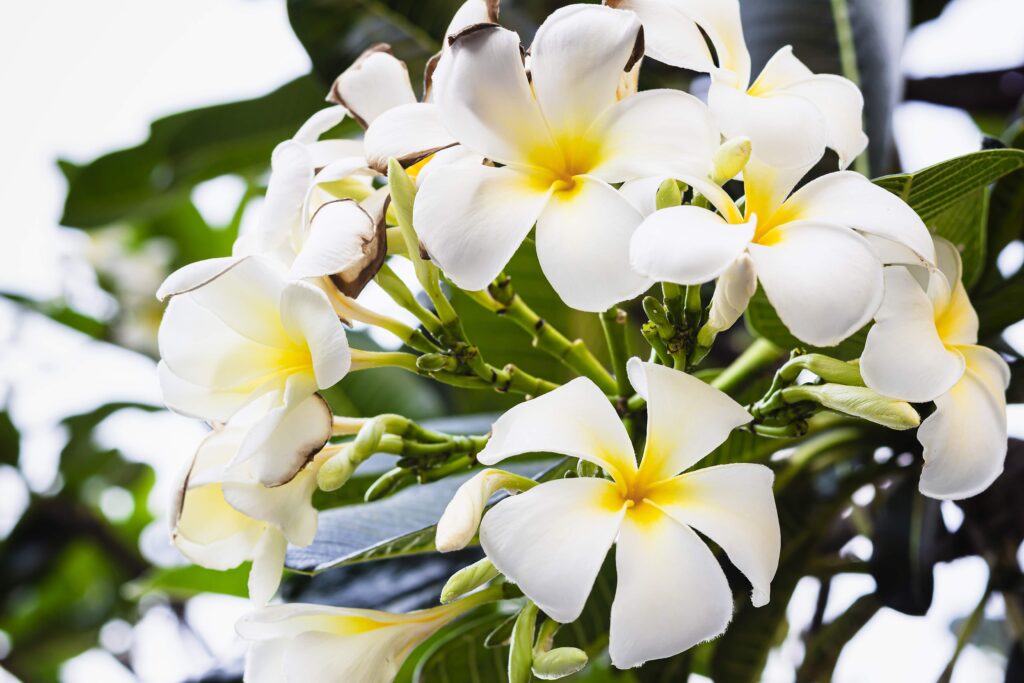
Frangipani trees and flowers are often planted right at the gates, or the entrance to the family compound and hotels.
You will often be welcomed to a spa, healing session, or a new place to stay with some flowers on your table.
Those are small simple signs of friendship and warmth Balinese people welcome you to this tropical island.
Frangipani For Non-Hindu in Bali
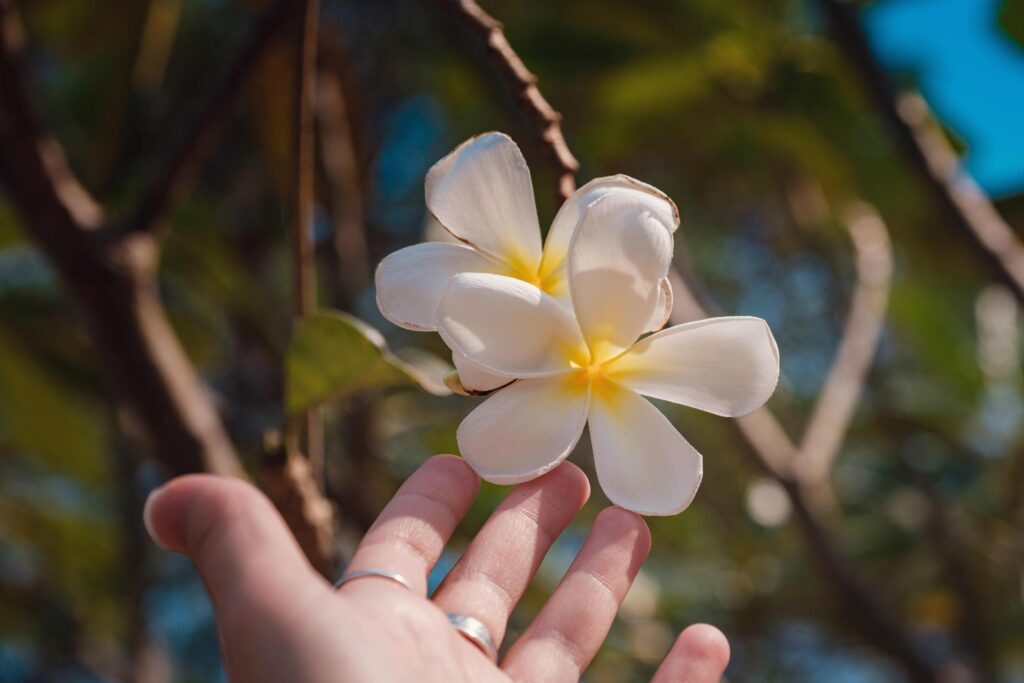
Javanese and non-Hindu Balinese have a more grim significance of the frangipani blossoms and trees.
Traditionally Javanese planted snow-white frangipani (Jepun salju) trees on graves, to create shade and a source for beautiful flowers.
In these cultures, frangipani flowers are closely associated with funerals, burial and cemeteries, and even ghosts.
Final Thoughts
Frangipani occupies an important spot in the spirituality and daily life of Balinese people.
Whether you came looking for new beginnings in Bali or to unwind strolling down the sun-kissed streets of Bali, these interesting insights on Bali’s most popular flower, its beauty, and its symbolic significance can give you a fresh perspective on how Balinese see and treat nature.
Perhaps, you will even plant one at home!

